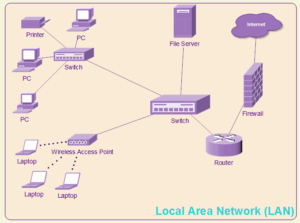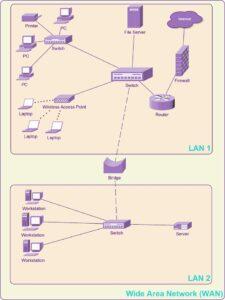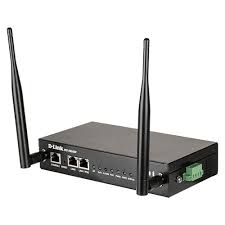A LAN is a network that connects computers and devices in a limited geographical area, such as a home, office, or school campus. LANs are typically owned, controlled, and managed by a single organization or individual. They usually use Ethernet cables or wireless technology like Wi-Fi to connect devices within the network.
A WAN is a network that spans a large geographical area, connecting multiple LANs and other networks together. WANs are often used to connect remote locations, such as branch offices or different cities. They rely on various communication technologies, including leased lines, satellites, and the Internet, to facilitate communication over long distances.
A WLAN is a type of LAN that uses wireless technology, such as Wi-Fi, to connect devices within a limited area. WLANs provide the same functionality as traditional wired LANs but offer the convenience of wireless connectivity, allowing users to connect to the network without the need for physical cables.
A PAN is a network that connects devices within the immediate vicinity of an individual, typically within a range of a few meters. PANs are commonly used to connect personal devices, such as smartphones, tablets, laptops, and wearable technology, to each other and to other networks, such as LANs or the Internet. Bluetooth and infrared are examples of technologies used to create PANs.
A VLAN is a logical segmentation of a LAN that allows multiple independent networks to coexist on the same physical infrastructure. VLANs are created by assigning network devices, such as switches, to specific virtual LANs, regardless of their physical location. This enables network administrators to control network traffic, improve security, and optimize network performance by grouping devices into separate broadcast domains.
SAN stands for Storage Area Network. It’s a dedicated high-speed network that connects and consolidates storage resources to multiple servers. The primary purpose of a SAN is to provide block-level access to data storage. Unlike traditional storage architectures where storage devices are directly attached to servers, SANs separate storage resources from server resources, allowing multiple servers to access shared storage devices simultaneously.LAN
LAN(Local Area Network)
WAN
WAN (Wide Area Network)
WLAN
WLAN (Wireless Local Area Network)
PAN
PAN (Personal Area Network)
VLAN
VLAN (Virtual Local Area Network)
SAN
Resources



